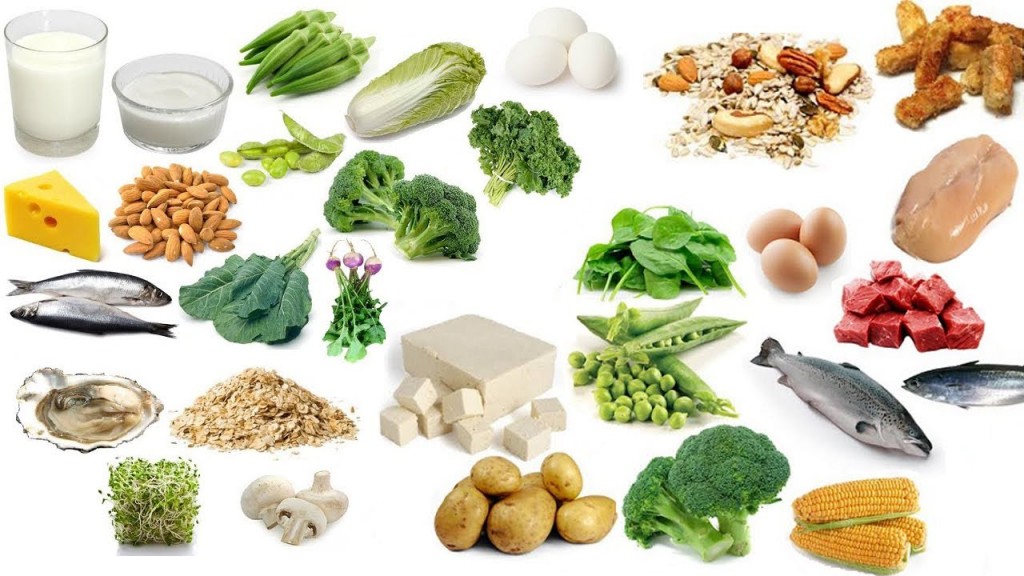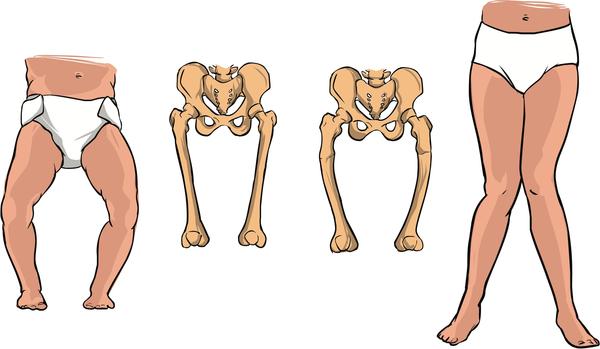Table of Contents
Calcium and Vitamin D
Want to have healthy bones? Then make Vitamin D and calcium your best friends today. The right amount of these will go a long way in reducing the chances of you breaking a bone or developing the bone-weakening disease known as osteoporosis. This is a disorder of the bones that results in a progressive reduction in the mass and density of the bones. This results in the weakening and thinning of the bones making them prone to getting fractured. According to research, there are over 1.3 million occurrences of osteoporotic fractures in the United States every year. These primarily occur in the bones within the hip, spine (the vertebrae), and in the forearm, close to the wrist.
According to leading experts that perform orthopedic surgery Singapore, as we advance in age, our body’s ability to absorb calcium and Vitamin D tends to become weaker. This is particularly true of women that undergo Menopause. It is important to run tests to find out whether your body is lacking in Vitamin D or not. If it does, then you need to start taking supplements that can help with increased absorption at an advanced age. If bones get weak or brittle, there are higher chances of them getting damaged or suffering from fractures.
So, what are the benefits of Vitamin D and Calcium?
It is important to take good nutrition to maintain healthy bones. The benefits include:
- Calcium is crucial in reducing loss of bone weight and also the reduction of the risk of fracturing the bones surrounding the spinal cord (the vertebrae).
- Enough consumption of calcium e.g. milk during a young age is essential in ensuring a higher mass and density of the bones during the older age. This is crucial in reducing the risk of developing fractures during adulthood.
- Consumption of sufficient calcium is also beneficial in that it reduces cholesterol levels and blood pressure.
- A Vitamin D and Calcium supplement also reduce the chances of tooth loss in elderly people.
- Vitamin D supplements are also essential in reducing the chances of heart disease developing and also eliminating the risk of developing multiple sclerosis.
- Are you looking to lose some weight? Then some extra Vitamin D supplements in your diet will greatly boost your efforts.
Expert advice on consumption given by the Institute of Medicine advises that adults aged 19 to 70 years should consume up to 600 IU every day. Individuals above the age of 70 should consume up to 800 IU daily. The amount of calcium needed every day is dependent on an individual’s age and gender.
| Age | Male | Female | Pregnant | Lactating |
|---|---|---|---|---|
| 0–6 months* | 200 mg | 200 mg | ||
| 7–12 months* | 260 mg | 260 mg | ||
| 1–3 years | 700 mg | 700 mg | ||
| 4–8 years | 1,000 mg | 1,000 mg | ||
| 9–13 years | 1,300 mg | 1,300 mg | ||
| 14–18 years | 1,300 mg | 1,300 mg | 1,300 mg | 1,300 mg |
| 19–50 years | 1,000 mg | 1,000 mg | 1,000 mg | 1,000 mg |
| 51–70 years | 1,000 mg | 1,200 mg | ||
| 71+ years | 1,200 mg | 1,200 mg |
* Adequate Intake (AI)
Symptoms of Calcium Deficiency
Having inadequate amounts of calcium from supplements and food will not produce any obvious symptoms in a short term. The amount of calcium circulating in the blood is very closely monitored. Medical problems and/or treatments such as surgical removal of internal organs like the stomach, renal failure, and some medications like diuretics are the primary causes of hypocalcemia. The symptoms of hypocalcemia include:
- Tingling and numbness in the fingers
- Convulsions
- Muscle cramps
- Poor appetite
- Lethargy
- Abnormal heart rhythms
If not treated, a deficiency of calcium could eventually be fatal. Long-term damages of a deficiency in calcium are the development of osteopenia, which could result in osteoporosis. This increases the risk of developing a bone fracture, especially in elderly people. A deficiency in calcium could also result in rickets. However, this disease is more common due to a deficiency in Vitamin D.
| Food | Milligrams (mg) per serving |
Percent DV* |
|---|---|---|
| Yogurt, plain, low fat, 8 ounces | 415 | 42 |
| Mozzarella, part skim, 1.5 ounces | 333 | 33 |
| Sardines, canned in oil, with bones, 3 ounces | 325 | 33 |
| Yogurt, fruit, low fat, 8 ounces | 313–384 | 31–38 |
| Cheddar cheese, 1.5 ounces | 307 | 31 |
| Milk, nonfat, 8 ounces** | 299 | 30 |
| Soymilk, calcium-fortified, 8 ounces | 299 | 30 |
| Milk, reduced-fat (2% milk fat), 8 ounces | 293 | 29 |
| Milk, buttermilk, lowfat, 8 ounces | 284 | 28 |
| Milk, whole (3.25% milk fat), 8 ounces | 276 | 28 |
| Orange juice, calcium-fortified, 6 ounces | 261 | 26 |
| Tofu, firm, made with calcium sulfate, ½ cup*** | 253 | 25 |
| Salmon, pink, canned, solids with bone, 3 ounces | 181 | 18 |
| Cottage cheese, 1% milk fat, 1 cup | 138 | 14 |
| Tofu, soft, made with calcium sulfate, ½ cup*** | 138 | 14 |
| Ready-to-eat cereal, calcium-fortified, 1 cup | 100–1,000 | 10–100 |
| Frozen yogurt, vanilla, soft serve, ½ cup | 103 | 10 |
| Turnip greens, fresh, boiled, ½ cup | 99 | 10 |
| Kale, raw, chopped, 1 cup | 100 | 10 |
| Kale, fresh, cooked, 1 cup | 94 | 9 |
| Ice cream, vanilla, ½ cup | 84 | 8 |
| Chinese cabbage, bok choi, raw, shredded, 1 cup | 74 | 7 |
| Bread, white, 1 slice | 73 | 7 |
| Pudding, chocolate, ready to eat, refrigerated, 4 ounces | 55 | 6 |
| Tortilla, corn, ready-to-bake/fry, one 6″ diameter | 46 | 5 |
| Tortilla, flour, ready-to-bake/fry, one 6″ diameter | 32 | 3 |
| Sour cream, reduced fat, cultured, 2 tablespoons | 31 | 3 |
| Bread, whole-wheat, 1 slice | 30 | 3 |
| Broccoli, raw, ½ cup | 21 | 2 |
| Cheese, cream, regular, 1 tablespoon | 14 | 1 |
* DV = Daily Value. DVs were developed by the U.S. Food and Drug Administration to help consumers compare the nutrient contents among products within the context of a total daily diet. The DV for calcium is 1,000 mg for adults and children aged 4 years and older. Foods providing 20% of more of the DV are considered to be high sources of a nutrient, but foods providing lower percentages of the DV also contribute to a healthful diet. The U.S. Department of Agriculture’s (USDA’s) Nutrient Databaseexternal link disclaimer Web site lists the nutrient content of many foods and provides a comprehensive list of foods containing calcium arranged by nutrient content and by food name.
** Calcium content varies slightly by fat content; the more fat, the less calcium the food contains.
*** Calcium content is for tofu processed with calcium salt. Tofu processed with other salts does not provide significant amounts of calcium.
Importance of Vitamin D
Used in the prevention and treatment of osteoporosis. Vitamin D also enhances the absorption of calcium. It is recommended that individuals above 70 years consume not less than 800 Vitamin D units daily. Younger individuals are recommended to consume around 600 Vitamin D units daily.
This nutrient is available on its own or combined with other supplements. A good source is found in milk.
| Age | Male | Female | Pregnancy | Lactation |
|---|---|---|---|---|
| 0–12 months* | 400 IU (10 mcg) |
400 IU (10 mcg) |
||
| 1–13 years | 600 IU (15 mcg) |
600 IU (15 mcg) |
||
| 14–18 years | 600 IU (15 mcg) |
600 IU (15 mcg) |
600 IU (15 mcg) |
600 IU (15 mcg) |
| 19–50 years | 600 IU (15 mcg) |
600 IU (15 mcg) |
600 IU (15 mcg) |
600 IU (15 mcg) |
| 51–70 years | 600 IU (15 mcg) |
600 IU (15 mcg) |
||
| >70 years | 800 IU (20 mcg) |
800 IU (20 mcg) |
* Adequate Intake (AI)
Signs of Vitamin D deficiency
This deficiency could be as a result of inadequacy in the diet, poor absorption, higher body requirement, increased excretion, and limited exposure to sunlight, or a lower level of intake. Diets that are Vitamin D deficient are mainly associated with lactose intolerance, veganism, Ovo-vegetarianism, and milk allergy.
Vitamin D deficiency is known to result in osteomalacia and rickets. In kids, vitamin D deficiency leads to rickets, a condition described as failure of bone tissue to correctly mineralize, which results in delicate bones as well as skeletal deformities. Rickets was initially described from the mid-17th century by British researchers. From the late 19th and early 20th centuries, German physicians observed that taking one to three tsp each day of cod liver fish oil might reverse rickets. The fortification of milk with vitamin D starting in the 1930s has made rickets an uncommon disease in the USA, even though it remains to be reported regularly, especially amongst American-African infants & children.
Plain breastfeeding without giving vitamin D supplements may also cause rickets if the mother isn’t Vitamin D replete. Other causes of rickets in children include too much use of sunscreen, minimal exercise, and limited exposure to sunlight.
Symptoms of osteomalacia in adults include muscle weakness and bone pain.
Sources of Vitamin D and Calcium
A small can of salmon is sufficient to reach your daily goal of these important minerals and vitamins. The sun is also a good source. However, wearing sunscreen to protect the screen prevents the body from producing Vitamin D. The sun also has to be of sufficient intensity for it to benefit you.
| Food | IUs per serving* | Percent DV** |
|---|---|---|
| Cod liver oil, 1 tablespoon | 1,360 | 340 |
| Swordfish, cooked, 3 ounces | 566 | 142 |
| Salmon (sockeye), cooked, 3 ounces | 447 | 112 |
| Tuna fish, canned in water, drained, 3 ounces | 154 | 39 |
| Orange juice fortified with vitamin D, 1 cup (check product labels, as the amount of added vitamin D, varies) | 137 | 34 |
| Milk, nonfat, reduced fat, and whole, vitamin D-fortified, 1 cup | 115-124 | 29-31 |
| Yogurt, fortified with 20% of the DV for vitamin D, 6 ounces (more heavily fortified yogurts provide more of the DV) | 80 | 20 |
| Margarine, fortified, 1 tablespoon | 60 | 15 |
| Sardines, canned in oil, drained, 2 sardines | 46 | 12 |
| Liver, beef, cooked, 3 ounces | 42 | 11 |
| Egg, 1 large (vitamin D is found in yolk) | 41 | 10 |
| Ready-to-eat cereal, fortified with 10% of the DV for vitamin D, 0.75-1 cup (more heavily fortified cereals might provide more of the DV) | 40 | 10 |
| Cheese, Swiss, 1 ounce | 6 | 2 |
* IUs = International Units.
** DV = Daily Value.
If your diet does not supply enough of these nutrients, then you might consider taking supplements or multivitamins. However, avoid overdoing your supplements as too much of these nutrients are not recommended.
References: http://ods.od.nih.gov




There is certainly a lot to know about this issue.
I really like all the points you have made.